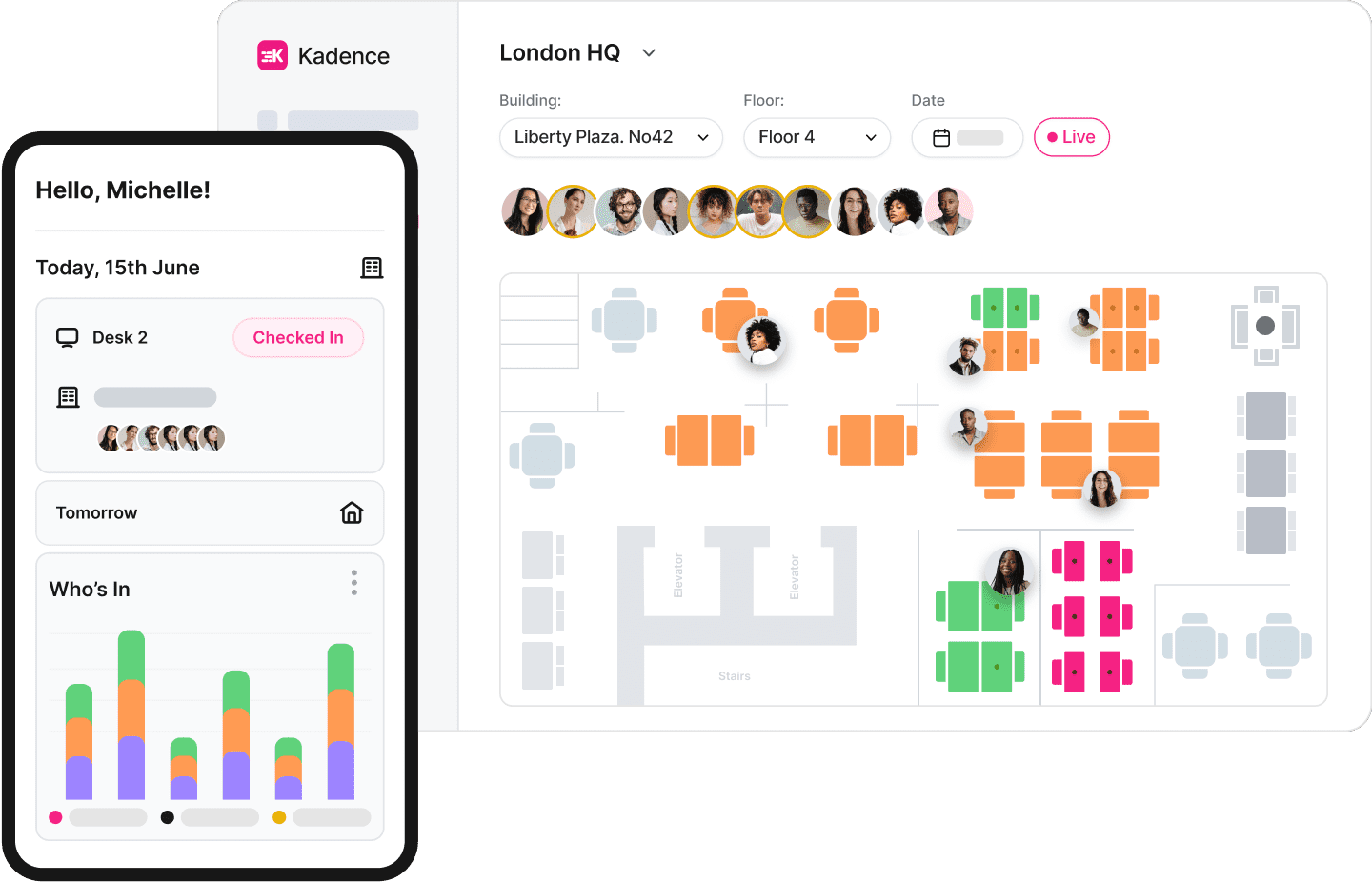There’s a silent shift happening in workplaces around the world. It’s called hushed hybrid — a growing trend where employees and their managers quietly agree to ignore rigid return-to-office mandates.
A variant of hybrid work gone wrong, hushed hybrid emerges when corporate leadership demands more in-office presence—say, three days a week—but frontline managers know enforcing that is more trouble than it’s worth. Instead of creating conflict or risking attrition, these managers give employees a quiet nod to come in once or twice a week. Everyone wins—except the clarity of the policy and the integrity of the strategy.
This disconnect between top-down mandates and on-the-ground behavior is now common. And it’s undermining trust, consistency, and business performance, because it’s become the quiet crisis no one wants to talk about.
What Is Hushed Hybrid?
Hushed hybrid describes a workplace where workers collaborate secretly with their managers to come into the office less frequently than the company has formally required. It’s not passive resistance by employees—it’s active collusion with frontline managers who know the policy doesn’t reflect reality.
Managers recognize that rigid RTO mandates cause resentment, not results. So they quietly override executive directives, allowing team members to continue working remotely more often. On paper, the company is enforcing a mandate. In practice, it’s being bypassed.
It’s a performance of compliance. And over time, it breaks down the integrity of both the policy and the company culture.
Why Hushed Hybrid Happens (and Why It's So Dangerous)
Companies often issue broad return-to-office policies to signal control and alignment. But when those policies are disconnected from what employees want—and what managers are willing to enforce—they become empty rules.
This is where hushed hybrid takes hold. The C-suite says one thing. Team leads do another. And employees are left navigating the gap.
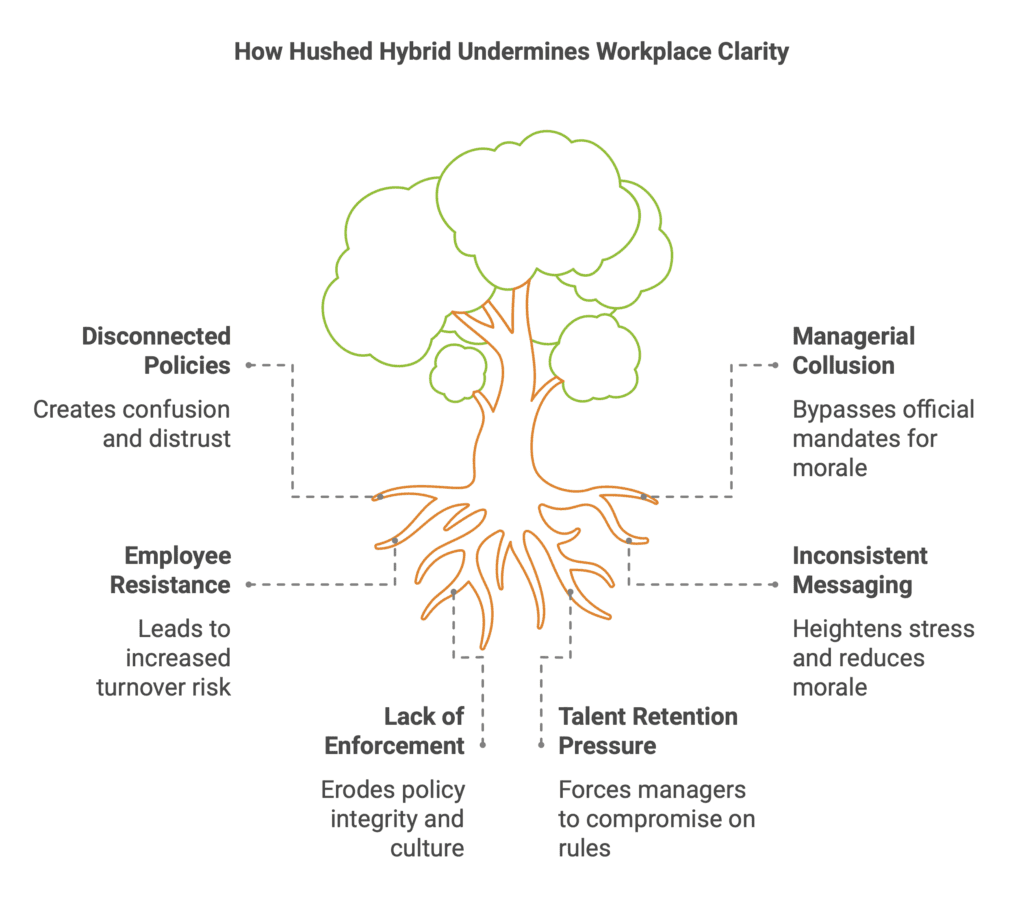
According to a Gartner survey, 77% of hybrid workers reported that inconsistent messaging from leadership increased stress and reduced morale. That same inconsistency is now baked into how RTO policies are implemented.
Managers aren’t doing this to be subversive—they’re doing it to retain talent and keep morale intact. But in doing so, they’re creating a fragmented workplace experience that lacks clarity and fairness.
And the stakes are high. A 2025 survey found that nearly half of UK hybrid workers would quit if forced to return to the office full-time—unless they received a significant pay increase. Among Millennials and Gen Z, willingness to leave was even higher.
If your hybrid policy is being undercut from within, it’s time to rethink whether it’s actually working.

What Employees Actually Want From Hybrid Work
Flexibility isn’t a perk. It’s the baseline expectation of a modern workforce.
A McKinsey report found that 87% of employees offered flexible work take advantage of it. In the same study, flexibility ranked alongside compensation and career development as a top driver of employee satisfaction.
But it’s not just about being allowed to work from home. Employees want predictability. They want policies they can trust. And they want to know their experience isn’t dependent on a lenient manager or an unspoken workaround.
If your hybrid strategy requires a wink and a nod to function, it’s broken.

The Fix? Intentional Flexibility
Fixing hushed hybrid requires more than issuing another memo. It demands a fundamental shift in how hybrid work is designed and supported. Kadence enables companies to move from passive resistance to purposeful rhythm by helping them:
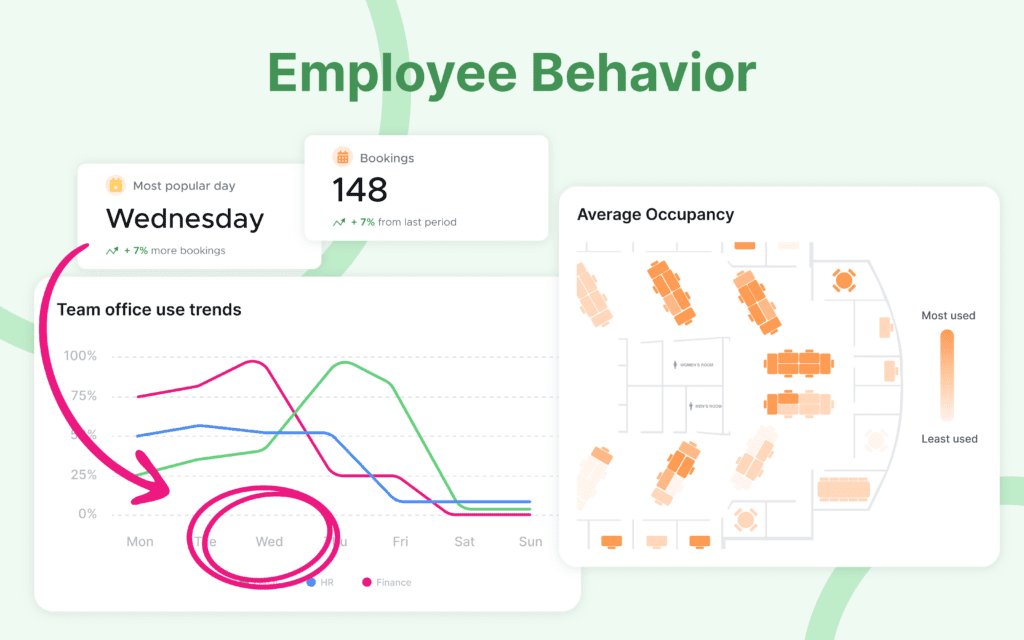
- Create and communicate clear hybrid policies based on team workflows, not arbitrary mandates. Kadence gives employees visibility into their teammates’ schedules, making coordination seamless and transparent.
- Empower managers with real-time tools that remove the guesswork from coordination. Managers can see who plans to be in the office, reducing the pressure to enforce vague policies.
- Align office use with purpose by turning in-person time into a strategic asset—focused on collaboration, onboarding, and high-impact work. Kadence makes booking desks and rooms frictionless and intuitive.
- Track workplace trends and adapt quickly with data-driven insights. Leaders can see how space is actually used and evolve their strategy to match employee behavior, not fight it.
These aren’t just tactical fixes. They’re the foundation of a high-functioning hybrid culture that values trust, autonomy, and outcomes over outdated presenteeism.
Kadence helps companies move beyond hushed hybrid by giving everyone the tools to make flexible work intentional—and effective.
It’s not about presence for presence’s sake. It’s about designing a rhythm of work that makes sense.
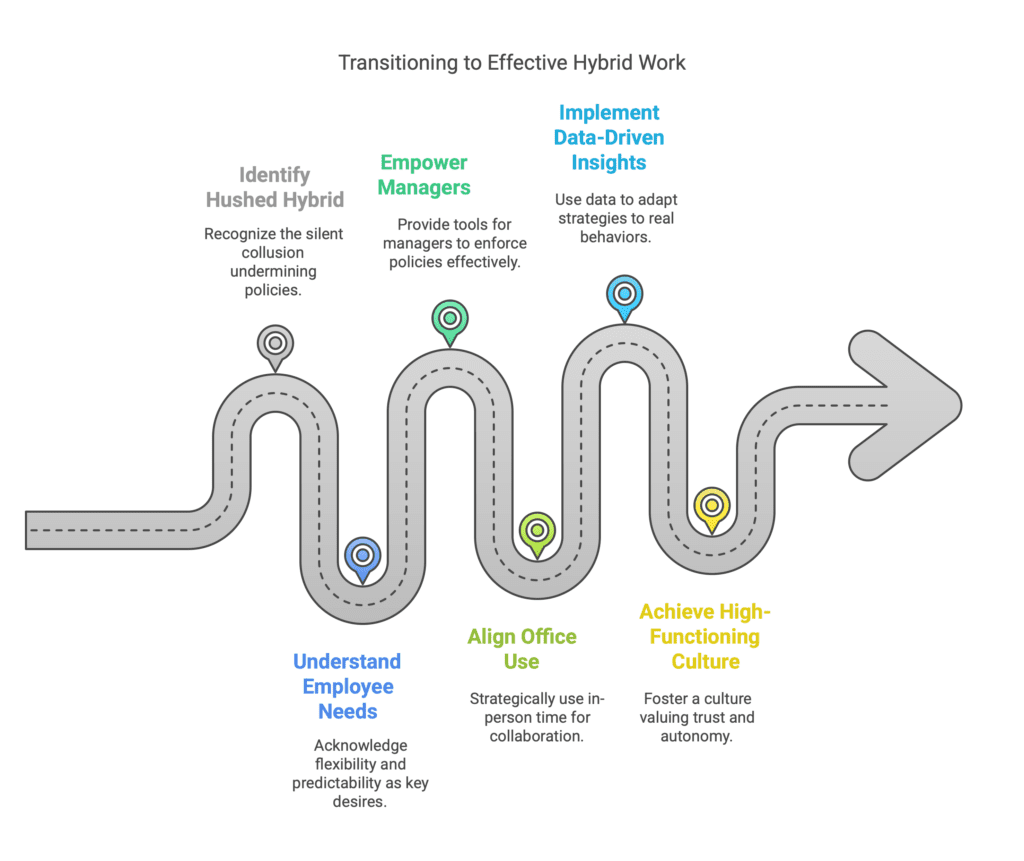
Say It With Confidence — Not in a Whisper
Hushed hybrid is the natural result of leadership saying one thing while managers do another. It’s not sustainable—and it’s not strategic.
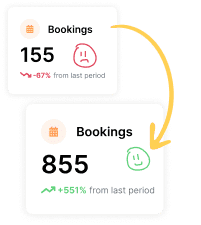
If you’re serious about building a high-performing, future-ready organization, stop relying on whispered compromises. Say what you mean. Design policies people actually follow. And use Kadence to bring consistency and clarity to your hybrid strategy.
Ready to move beyond hushed hybrid? Book a demo with Kadence today and take the first step toward a hybrid strategy that actually works.
